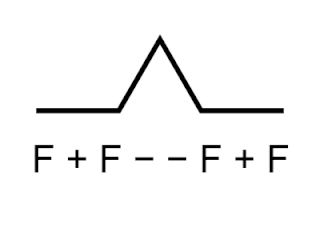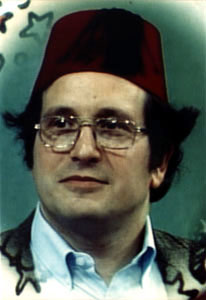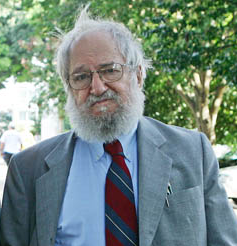
Logo is an educational programming language, designed in 1967 by Wally Feurzeig, Seymour Papert, and Cynthia Solomon. Logo is not an acronym: the name was coined by Feurzeig while he was at Bolt, Beranek and Newman, and derives from the Greek logos, meaning 'word' or 'thought'.

Seymour Aubrey Papert was a South African-born American mathematician, computer scientist, and educator, who spent most of his career teaching and researching at MIT. He was one of the pioneers of artificial intelligence, and of the constructionist movement in education. He was co-inventor, with Wally Feurzeig and Cynthia Solomon, of the Logo programming language.

Gerald Jay Sussman is the Panasonic Professor of Electrical Engineering at the Massachusetts Institute of Technology (MIT). He has been involved in artificial intelligence (AI) research at MIT since 1964. His research has centered on understanding the problem-solving strategies used by scientists and engineers, with the goals of automating parts of the process and formalizing it to provide more effective methods of science and engineering education. Sussman has also worked in computer languages, in computer architecture, and in Very Large Scale Integration (VLSI) design.
In computer graphics, turtle graphics are vector graphics using a relative cursor upon a Cartesian plane. Turtle graphics is a key feature of the Logo programming language.

The MIT Media Lab is a research laboratory at the Massachusetts Institute of Technology, growing out of MIT's Architecture Machine Group in the School of Architecture. Its research does not restrict to fixed academic disciplines, but draws from technology, media, science, art, and design. As of 2014, Media lab's research groups include fetus, biologically inspired fabrication, socially engaging robots, emotive computing, bionics, and hyperinstruments.

Computer Science and Artificial Intelligence Laboratory (CSAIL) is a research institute at the Massachusetts Institute of Technology (MIT) formed by the 2003 merger of the Laboratory for Computer Science (LCS) and the Artificial Intelligence Laboratory. Housed within the Ray and Maria Stata Center, CSAIL is the largest on-campus laboratory as measured by research scope and membership. It is part of the Schwarzman College of Computing but is also overseen by the MIT Vice President of Research.

Wallace "Wally" Feurzeig was an American computer scientist who was co-inventor, with Seymour Papert and Cynthia Solomon, of the programming language Logo, and a well-known researcher in artificial intelligence (AI).

Constructionist learning is the creation by learners of mental models to understand the world around them. Constructionism advocates student-centered, discovery learning where students use what they already know to acquire more knowledge. Students learn through participation in project-based learning where they make connections between different ideas and areas of knowledge facilitated by the teacher through coaching rather than using lectures or step-by-step guidance. Further, constructionism holds that learning can happen most effectively when people are active in making tangible objects in the real world. In this sense, constructionism is connected with experiential learning and builds on Jean Piaget's epistemological theory of constructivism.

Mitchel Resnick is an American computer scientist. He is the LEGO Papert Professor of Learning Research at the Massachusetts Institute of Technology (MIT) Media Lab. As of 2019, Resnick serves as head of the Media Arts and Sciences academic program, which grants master's degrees and Ph.D.s at the MIT Media Lab.

Idit R. Harel is an Israeli-American entrepreneur and CEO of Globaloria. She is researcher of learning sciences and of constructionist learning-based EdTech interventions.
Etoys is a child-friendly computer environment and object-oriented prototype-based programming language for use in education.
MicroWorlds is a family of computer programs developed by Logo Computer Systems Inc. (LCSI) that uses the Logo programming language and a turtle-shaped object to teach language, mathematics, programming, and robotics concepts in primary and secondary education. The program was part of a larger set of dialects and implementations created by Seymour Papert aimed at triggering the development of abstract ideas by children through experimentation.
MicroWorlds JR is a computer program using a simplified version of the Logo programming language to teach non-readers or early readers to program in Logo. It was first launched in 2004 by Logo Computer Systems, Inc. (LCSI), and as in their original line of MicroWorlds programs, the object on the screen begins as a turtle and can be controlled with basic commands to make it move. Differing from the Logo syntax developed by Seymour Papert and teams at MIT, MicroWorlds JR uses images to replace the command names, which are selected by the child to create turtle graphics. The turtle object can be given a variety of shapes that act as a costume for the turtle, and therefore lends itself to a variety of animations and creative stories and projects for younger students.

UCBLogo, also termed Berkeley Logo, is a programming language, a dialect of Logo, which derived from Lisp. It is a dialect of Logo intended to be a "minimum Logo standard".
Allison Druin is an American computer scientist who studies human–computer interaction, and digital libraries, particularly focusing on children's use of educational technology. She is a professor emerita at the University of Maryland, College Park and Associate Provost for Research and Strategic Partnerships at the Pratt Institute.
Sylvia Weir (1925–2018) was a paediatrician who worked on artificial intelligence. She pioneered the use of robotics in autism therapy.

Jeanne Bamberger was an American music educator who was Professor of Music and Urban Education at the Massachusetts Institute of Technology, and Adjunct Professor of Music at the University of California, Berkeley. Her research interests included music cognitive development, music theory and performance, teacher development, and the design of text and software materials that fostered these areas of development.

Turtlestitch is a free and open source platform for generating and sharing patterns for embroidery machines. Turtlestitch is derived from educational programming languages such as Logo, Scratch and Snap! using the same jigsaw style programming paradigm which offers simplicity suitable for novices but has powerful features, described as ‘low threshold, high ceiling’ by Seymour Papert. Its microworld is a turtle representing the needle of a programmable embroidery machine. Turtlestitch can be used for creating novel patterns for embroidery, combining the abstract logic of computing and the physical materiality of textiles. Its primary use is educational, as it offers a way of introducing programming to audiences with diverse interests. A growing gallery of open source embroidery designs enables community-based collaboration and shared learning. In 2017, Turtlestitch received the award for the best Open Educational Resource in the German-speaking countries.
Marina Umaschi Bers is the Augustus Long Professor of Education at Boston College. Bers holds a secondary appointment in Boston College's Department of Computer Science. Bers directs the interdisciplinary DevTech Research Group, which she started in 2001 at Tufts University. Her research involves the design and study of innovative learning technologies to promote children's positive development. She is known for her work in the field of early childhood computer science with projects of national and international visibility. Bers is the co-creator of the free ScratchJr programming language, used by 35 million children, and the creator of the KIBO robotic kit, which has no screens or keyboards.












